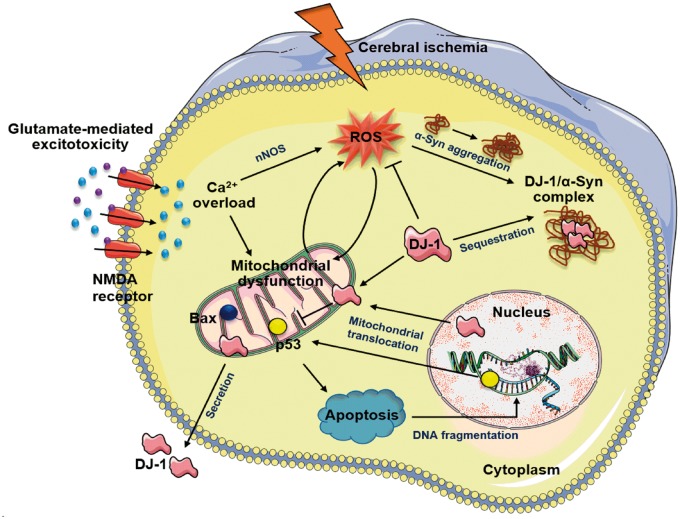Figure 3.
Proposed neuroprotective role of DJ-1 following cerebral ischemia. During the ischemic cascade, glutamate-induced excitotoxic stimulation of Ca2+-permeable NMDA receptors and subsequent Ca2+ influx activates intracellular Ca2+ sensitive enzymes such as nNOS. Oxidative stress produced by ROS damages organelles including mitochondria and promotes aggregation of α-Syn. Following ischemic insult, DJ-1 translocates into neuronal mitochondria and nuclei to act as an antioxidant and molecular chaperone. Once translocated, DJ-1 negatively regulates proapoptotic factors like p53 and Bax and inhibits apoptotic cell death. DJ-1 is also secreted into the extracellular space, but its functional significance is not yet clear. Upon ischemic stress, aggregated α-Syn may form higher molecular weight complexes with DJ-1 resulting in decreased solubility and bioavailability of DJ-1.

